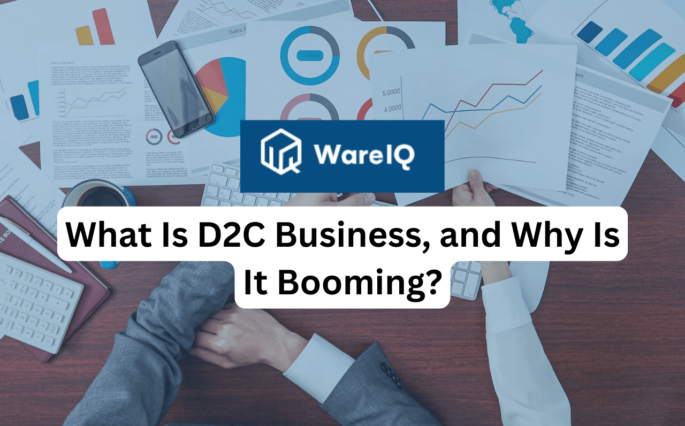Navigating Upstream & Downstream Supply Chain: Expert Guide


The actions associated with the organization’s suppliers—those parties who find raw materials to provide to the manufacturer—are all part of the upstream supply chain. The term “downstream supply chain” describes actions taken after product manufacture, namely the process of transferring the good to the buyer.
Outsourcing raw materials, such as plastics, wood, metals, and other highly specialised and sophisticated items, as well as manufacturing running expenses are upstream operations that help produce things quickly. A lack of raw materials might result in lower inventory levels and more pronounced market swings since they are crucial. Having access to inexpensive raw materials can provide suppliers with a competitive edge.
The post-manufacturing activities that take place in downstream supply chains include the delivery of goods to retail outlets or online as part of e-commerce, as well as the selling of goods to final consumers. The ultimate customer is where the information flow in a downstream supply chain comes to a conclusion.
- Flows in the Supply Chain
- How to Manage Upstream Supply Chain
- Managing Downstream supply chain
- Difference between Upstream and Downstream Supply Chain
- Conclusion
- FAQs
- What is the main focus of the upstream supply chain?
- What does the downstream supply chain primarily involve?
- What are the key components of the upstream supply chain?
- What are the components included in the downstream supply chain?
- Why is the upstream supply chain important?
- What challenges are associated with the downstream supply chain?
- How can supply chain visibility benefit customer satisfaction in the downstream supply chain?
Flows in the Supply Chain
Any logistics will experience three basic sorts of flows: the flow of materials/goods, the flow of currency, and the flow of information.
- Materials and commodities are moved forward for the regular flow from higher-tier suppliers (upstream) to the final consumer (downstream).
- A reverse flow of materials or commodities will also occur in the opposite direction to the forward flow if there are any returns for whatever reason.
- The movement of currency occurs upstream to downstream. As an illustration, the retailer must reimburse the distributor for the items they have purchased from them. Since organisations must communicate various types of information with one another in order for the whole logistics to be able to make better decisions and increase overall performance, information flow occurs both ways in the supply chain.
How to Manage Upstream Supply Chain
Supplier Risk Assessment
- Examine each of your vendors in detail. Make an effort to comprehend the possibility of a supply disruption.
- To assess each supplier’s readiness, take into account their prior performance, financial capacity, credentials, and business continuity plans.
Supplier Diversity and Redundancy
- You could get essential supplies or parts from a single provider with whom you’ve developed a solid rapport.
- Dependence on a small number of suppliers, though, might make you more susceptible to interruptions.
- Create a reliable network of backup vendors, and exercise the same stringent scrutiny in selecting them as you would for major vendors.
Preparing for Weather-Related Disruptions
- Shipping delays may occur as a result of severe weather-related catastrophes and other natural calamities that affect both local and international suppliers.
- A natural disaster may result in shortages, rising prices, and disappointed potential customers.
- When preparing for the unexpected, be aware of the regular weather patterns in the areas where goods are obtained from or transported through.
Cybersecurity Risks in Supply Chains
- Cybersecurity risks are revealing holes in supply networks for the industrial industry as they grow and change.
- Think about how a cyber assault can influence your upstream suppliers’ business operations since a disturbance there could harm your own.
- Conversely, if vendors are allowed to communicate with your systems, cybercriminals can discover an access point vulnerability.
Managing Downstream supply chain
Downstream Supply Chain Focus
- Distribution, retail, and sales channels must be the main areas of attention while managing the downstream chain.
- For prompt delivery and ideal inventory management, strong cooperation with distributors and retailers is necessary.
- You may acquire insights into consumer demand trends and adjust your distribution network accordingly by utilising technology and data analytics.
Maintain Visibility for Customer Satisfaction
- Sometimes, client annoyance is caused by more than just waiting. Having to follow up frequently and not receiving a response from the company are frequently the major causes of consumers’ frustration.
- For this reason, it’s crucial to maintain supply chain visibility and make sure your clients are informed of any recent developments about their purchases.
- Ensure that you provide real-time order status updates so that customers are aware of the current situation and the anticipated delivery date.
- This will guarantee that your consumers always remain informed, despite unforeseen delays and disturbances.
Outsourcing Logistics for Efficient Fulfillment
- Your downstream chain activities’ ability to run smoothly depends critically on your fulfilment and shipping capabilities.
- Many businesses hit a wall here because they can’t effectively fill client orders.
- Since you’ll have professionals manage the majority of your downstream supply operations when you outsource your logistics, it may be the quickest and easiest solution to this problem.
Difference between Upstream and Downstream Supply Chain
| Aspect | Upstream Supply Chain | Downstream Supply Chain |
| Definition | Focuses on activities related to sourcing raw materials | Focuses on activities related to delivering products to customers |
| Components | Involves suppliers and materials procurement | Includes procurement, production, distribution, and retail activities |
| Purpose | Ensures materials are available for production | Ensures products reach customers efficiently and on time |
| Complexity | Can involve multiple suppliers or just one, depending on production needs | Involves various stages from production to customer delivery |
| Integration | Must integrate with downstream processes for efficient material delivery | Requires optimization for cost savings and improved customer experiences |
| Key Activities | Collects, stores, and delivers raw materials | Includes inventory management, pricing, promotion strategies, and customer service |
| Importance | Critical for maintaining production operations | Critical for meeting customer demand and satisfaction |
| Challenges | Ensuring timely and efficient material delivery | Achieving cost savings and enhancing customer experiences |
Conclusion
The term “downstream supply chain” describes actions taken after product manufacture, namely the process of transferring the good to the buyer. Having access to inexpensive raw materials can provide suppliers with a competitive edge.
The ultimate customer is where the information flow in a downstream supply comes to a conclusion. Dependence on a small number of suppliers, though, might make you more susceptible to interruptions. When preparing for the unexpected, be aware of the regular weather patterns in the areas where goods are obtained from or transported through.
Cybersecurity risks are revealing holes in chain networks for the industrial industry as they grow and change. Since you’ll have professionals manage the majority of your downstream chain operations when you outsource your logistics, it may be the quickest and easiest solution to this problem.
FAQs
What is the main focus of the upstream supply chain?
The upstream chain focuses on activities related to sourcing raw materials.
What does the downstream supply chain primarily involve?
The downstream supply primarily involves delivering products to customers.
What are the key components of the upstream supply chain?
The upstream chain involves suppliers and materials procurement.
What are the components included in the downstream supply chain?
The downstream supply includes procurement, production, distribution, and retail activities.
Why is the upstream supply chain important?
The upstream supply chain ensures materials are available for production.
What challenges are associated with the downstream supply chain?
Challenges in the downstream supply chain include achieving cost savings and enhancing customer experiences.
How can supply chain visibility benefit customer satisfaction in the downstream supply chain?
Supply chain visibility can inform customers of order status and anticipated delivery dates, improving satisfaction despite unforeseen delays.








